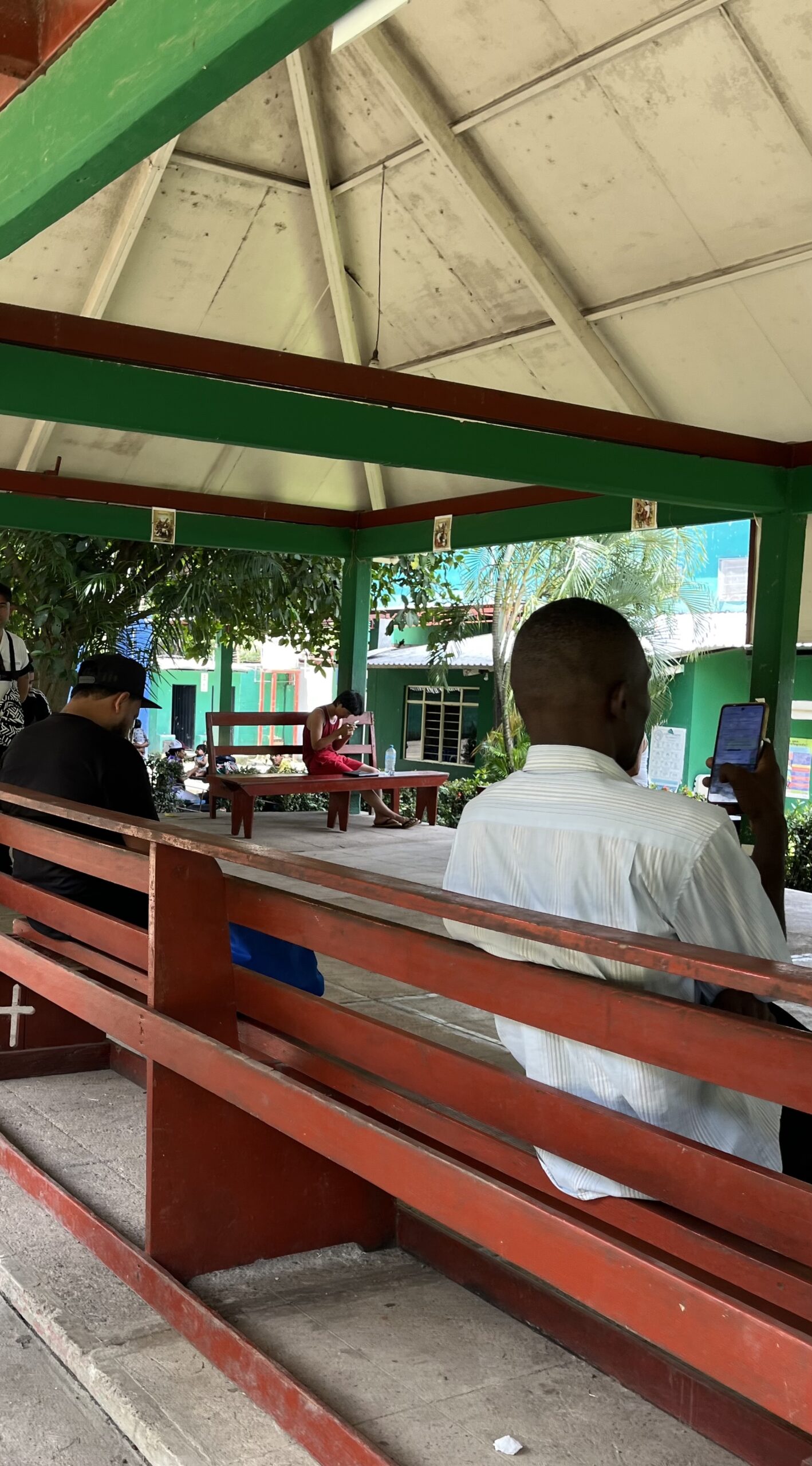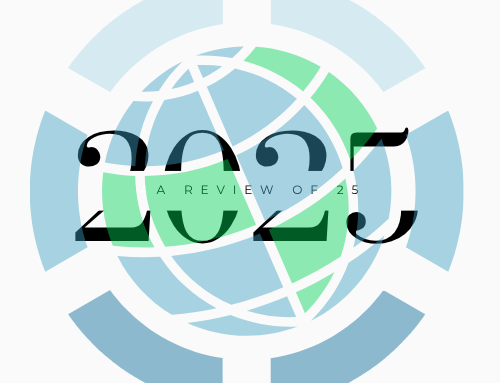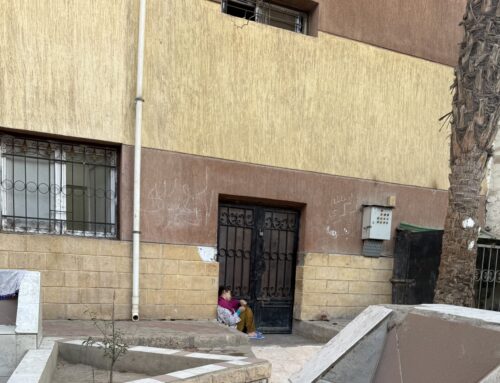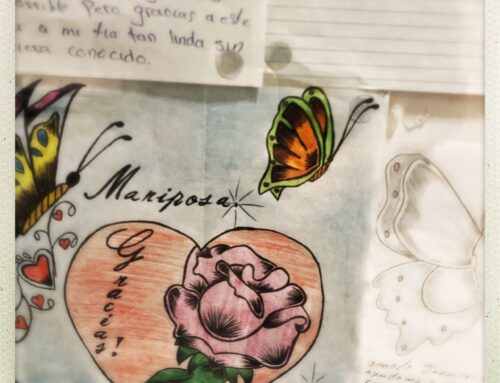
Migrants pass time in a shelter in Tapachula. Photo by Wendy Vogt.
On October 2, 2024, a pick-up truck carrying 33 migrants passed through a military checkpoint just north of the city of Tapachula located on Mexico’s southern border with Guatemala. Suspicious of the truck, Mexican soldiers followed it and opened fire, killing six people and injuring another ten. The slain included two sisters aged 18 and 11 from Egypt, and migrants from Honduras and El Salvador. The other victims on the truck came from Nepal, Cuba, India and Pakistan. A few months prior and only miles from the shooting along the same transit corridor, a small boat carrying nine migrants from China capsized, killing all but one man, who lost his wife and his child.
As a migration scholar who has worked along this migrant route for nearly 20 years, I was not surprised to learn about these tragedies, nor these blatant acts of state violence. Much of my research has focused on understanding the ways militarized violence is systematically produced, normalized and embedded into localized economies along what I call Mexico’s arterial border. More remarkable, however, was the diverse demographic makeup of travelers inside the truck and boat. A decade ago, nearly all migrants passing through this well-traveled corridor in southern Mexico were from the northern triangle countries of Guatemala, El Salvador and Honduras, fleeing everyday violence and political and economic insecurity. Today, the story is far more complex.
In recent years, less than half of migrants passing through Mexico are from Central America and increasing numbers come from Venezuela, Cuba, Haiti and extra-continental countries in Africa and Asia. According to statistics from Mexico’s Department of Interior, the number of African migrants entering Mexico increased ninefold between 2022 to 2023, from 6,672 to 59,834.[i] Similarly, according to US Customs and Border Patrol Statistics, the number of Chinese migrants apprehended at the US-Mexico border exploded from just 2,176 in 2022 to 38,246 in 2024.[ii]
A year before this tragic incident, I had been waiting at the airport in Mexico City for a flight to the southern Mexican state of Chiapas, when a group of armed Mexican marines wearing rugged sand-colored pants and army boots entered the waiting lounge. They formed a semi-circle around a group of around 30 Chinese nationals, predominately men, but also several women. Most of the Chinese travelers had face masks on, plain clothing and backpacks, and a few of them had suitcases. None of them had shoelaces in their sneakers. It is the policy of US Border Patrol to take the shoelaces off the shoes of detained migrants at the US-Mexico border as a security precaution, the rationale being that shoelaces can be used a weapon or to commit suicide while detained. The marines escorted the detainees through the airport to a departure gate. Despite an abundance of seats, the detainees were forced to sit on the cold hard ground while the marines stood guard over them. In a small act of humanity, a representative from a human rights organization passed out bottles of water and triangular sandwiches, which the migrants quickly ate before being whisked away once again by the marines through an unmarked departure gate, where presumably they were deported. As they disappeared, I wondered if these folks had been intercepted by US Border Patrol as their lace-less shoes suggested, and were only in transit back through Mexico to be eventually repatriated back to China, or if they had been intercepted and detained in Mexico. Either way, these captive bodies in waiting—and in transit—are a product of the longstanding yet flexible externalization of US border enforcement into Mexico, in which Mexico has served as a vital partner and enforcer in curbing migrant flows to the US.
This externalization is “felt” (Chemlali 2024) in inter-connected transit spaces across the country, but perhaps most deeply in the dynamic borderland chokepoint (Carse et al. 2023) of Tapachula. While historically an important node in transit journeys through the Americas, Tapachula is more recently known as the staging area for migrant caravans, prompting some officials to call it the new southern border of the United States. Reflecting changing global dynamics, an increasingly diverse (racial-ethnic-gender-sexuality-nationality) group of migrants fill the central plaza and surrounding downtown to rest and recuperate, eat and get haircuts, and most importantly, connect and strategize with other migrants and potential guides.
In 2024, the US government designated Tapachula as a strategically distanced site where asylum seekers were allowed to make asylum appointments through the Biden-era CBP One App. The average wait time for appointments was nine months. This lengthy delay constricted migrants’ mobility, increased the numbers of people waiting in makeshift camps and vulnerable conditions, and funneled migrants into more dangerous journeys in the backs of trucks and ill-equipped boats. The situation has continued to worsen as the Trump Administration shut down the CBP One App on his first day in office, canceling all appointments. And while these policy changes have profound impacts on migrants themselves, they are also felt in communities, like Tapachula, where people transit and wait and where everyday residents also grapple with precarity, displacement and border violence. Migrants do not travel in a void; rather, they encounter, dwell in, and give meaning to places along the way (Winters, Drotbohm, and González 2024).
The multi-directionality and diversity of global migrant flows become entangled in places like Tapachula. Before fieldwork this summer, my research associate explained that Tapachula remains a chokepoint, but now it is no longer primarily for people moving north, but also people moving back south. “Todo va de regreso” (everyone is coming back), she told me. Mexican nationals exit onto the tarmac from US deportation flights while stranded Venezuelan migrants protest for humanitarian flights to return home. In a city park, Haitian migrants sell cold bottles of water from tattered backpacks in hopes of earning a few pesos to continue their journeys or simply survive. In a nearby barber shop, migrants from Cameroon and Ghana trade stories and strategies of navigating the bureaucracy of Mexico’s asylum system. “Trump won’t be there forever,” a Cameroonian woman who recently opened an African restaurant tells me. “We will wait here in Mexico until he is gone.” And yet, for many of the extra-continental and non-Spanish speaking migrants I interviewed, there was a feeling of being doubly discriminated against and on the bottom of the migrant hierarchy in Mexico, outsiders among outsiders.
Ethnographic attention to the places where migrants pass through and dwell, and the connections formed between and among migrants and locals amidst dynamic conditions and localized economies, are ever more important. They reveal both the violent logics of global mobility and labor regimes where state violence is masked as security—as the families of the Egyptian sisters and Chinese boat victims know all too well—but also the everyday ways people resist these regimes through their movements, emerging socialities, and their dreams of survival.
Notes
[i] These numbers are similar to the numbers collected at the US-Mexico border where apprehensions of African migrants jumped from 13,406 in 2022 to 58,462 in 2023. Overall the number of unauthorized migrants in Mexico rose by 77% between 2022 and 2023, from 441,409 to 782,176.
[ii] According to US Customs and Border Patrol Statistics, approximately half of migrants apprehended on the US-Mexico border in 2024 came from countries categorized as “other” than Mexico, Guatemala, Honduras and El Salvador.
References
Carse, Ashley, Townsend Middleton, Jason Cons, Jatin Dua, Gabriela Valdivia, and Elizabeth Cullen Dunn. 2023. “Chokepoints: Anthropologies of the constricted contemporary.” Ethnos 88 (2): 193-203.
Chemlali, Ahlam. 2024. “Rings in the water: Felt externalisation and its rippling effect in the extended EU Borderlands.” Geopolitics 29 (3): 873-896.
Winters, Nanneke, Heike Drotbohm, and Yaatsil Guevara González, eds. 2024. (Un)Settling Place: Diverse and Divergent Place-Making of People on the Move. Berghahn.
Wendy A. Vogt is Associate Professor of Anthropology at Indiana University, Indianapolis. Her book, Lives in Transit: Violence and Intimacy on the Migrant Journey, published in the California Series in Public Anthropology, chronicles the dangerous trajectories of Central American migrants crossing Mexico and is based on long-term ethnographic fieldwork in humanitarian aid shelters and other transit sites.
Cite as: Vogt, Wendy A. 2025. “Outsiders among Outsiders in a Migrant Chokepoint”. In “Bordering and the War on Migration”, edited by Anna Simone Reumert, Wendy Vogt, and Charlie Piot, American Ethnologist website, 23 September 2025. [https://americanethnologist.org/online-content/outsiders-among-outsiders-in-a-migrant-chokepoint-by-wendy-vogt/]
This piece was edited by American Ethnological Society Digital Content Editor Kathryn E. Goldfarb (kathryn.goldfarb@colorado.edu).




